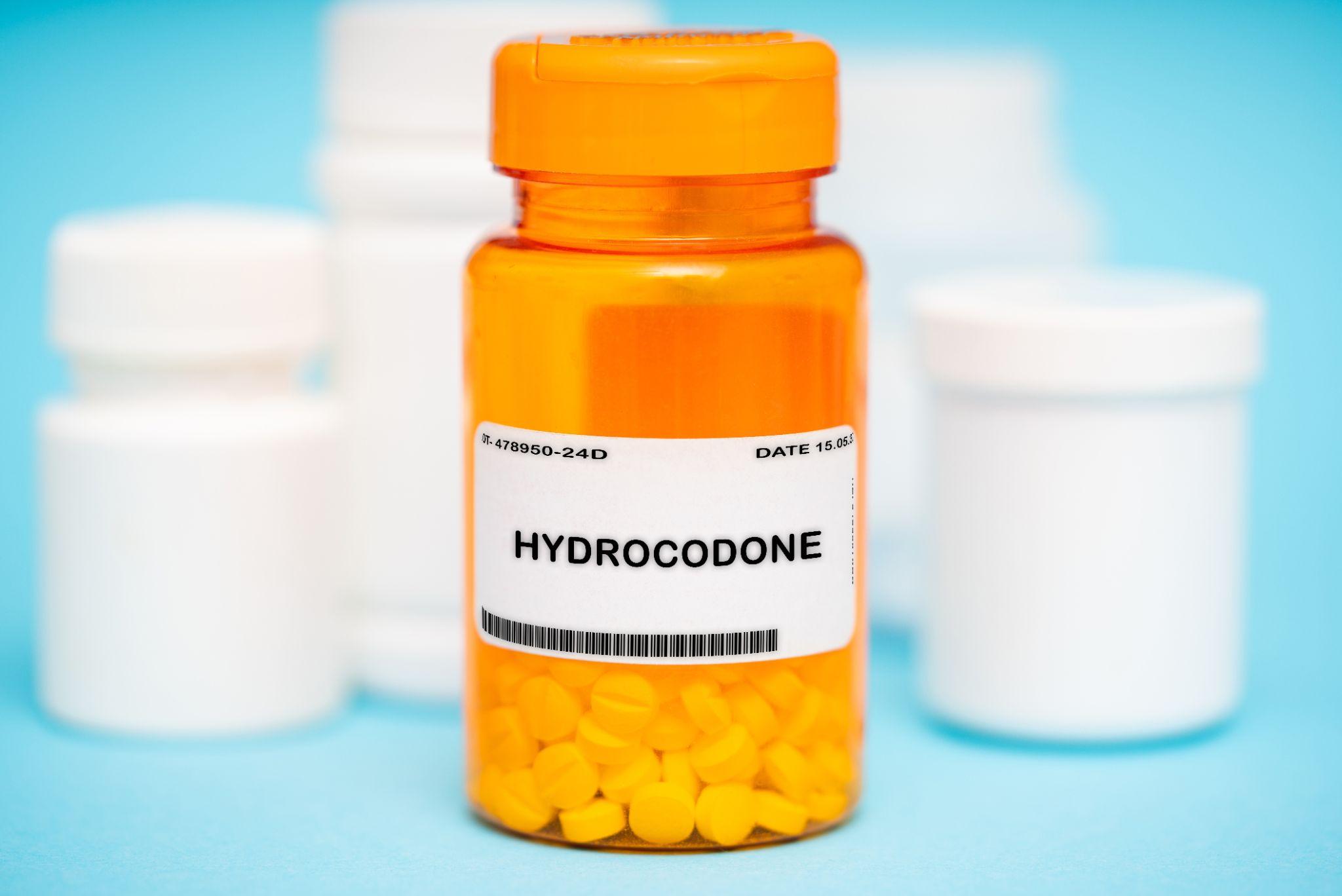Hydrocodone is a prescription opioid used to treat severe, around-the-clock pain and is classified as a Schedule II controlled substance in the United States. Due to the significant risk of drug abuse and addiction to hydrocodone, it should not be used to treat occasional moderate or severe pain. 1
Known on the streets as Vike and Watson-387, hydrocodone is commonly encountered as small pills but can also be found in syrup form. 2 Understanding hydrocodone’s characteristics, potential for addiction, and its side effects is crucial for individuals taking the medication and their loved ones.
Hydrocodone’s Addiction Potential
Hydrocodone works by binding to opioid receptors in the brain and spinal cord, which are part of the central nervous system. This binding alters pain perception and can induce feelings of pleasure or euphoria, contributing to its abuse potential.
Regular long-term use, even as prescribed, can lead to physical dependence and tolerance, where more of the drug is needed to achieve the same effects, setting a foundation for potential substance abuse. 3
Identifying Signs of Hydrocodone Addiction
Recognizing the signs and symptoms of hydrocodone addiction can help in seeking intervention early, which is critical for successful recovery. Signs of hydrocodone addiction can include: 3
- Increased tolerance. One of the first signs of abusing hydrocodone is needing increasingly higher doses of hydrocodone to feel the same effects. This tolerance can develop quickly, prompting users to consume more than their prescribed dose.
- Withdrawal symptoms. As physical dependence on hydrocodone develops, opioid withdrawal symptoms can occur if the drug is not taken regularly. Symptoms may include anxiety, irritability, muscle aches, insomnia, sweating, and in severe cases, nausea and vomiting.
- Loss of control. An individual may start using more hydrocodone than intended, or for longer periods than planned. They might express a persistent desire to cut down or control use but repeatedly fail to do so.
- Time spent. A lot of time may be spent obtaining hydrocodone, using it, or recovering from its effects. This might involve visiting multiple doctors to obtain more prescriptions, a practice known as “doctor shopping.”
- Neglect of duties. With increasing preoccupation with the drug, the individual may neglect responsibilities at work, school, or home. This neglect can manifest in decreased performance and attendance, neglecting household chores, or disregarding family obligations.
- Continued use despite problems. Continued hydrocodone use despite the clear knowledge of persistent or recurrent physical or psychological problems likely to have been caused or exacerbated by the drug is a strong indicator of addiction.
- Social or recreational sacrifices. An individual might give up important social, occupational, or recreational activities because of hydrocodone use, choosing to use the drug instead of engaging in these activities.
- Risky use. The person may use hydrocodone in physically hazardous situations, such as driving or operating machinery, or in higher doses despite the known risks.
Side Effects of Hydrocodone
Many hydrocodone side effects range from mild to severe. Being aware of these side effects can help individuals and their caregivers manage the medication more effectively and recognize when medical attention may be needed.
Common Side Effects
The most frequently observed side effects of hydrocodone include: 4
- Stomach Pain: This can vary from mild discomfort to severe pain.
- Dry Mouth: Persistent dryness in the mouth.
- Tiredness: Unusual fatigue or lack of energy.
- Headache: Moderate to severe
- Back Pain: Pain located in the lower or upper back.
- Muscle Tightening: Involuntary or uncomfortable muscle contractions.
- Ringing in the Ears: Persistent noise or ringing sounds in one or both ears.
- Sleep Disturbances: Difficulty falling asleep or staying asleep throughout the night.
- Swelling: Swelling of the feet, legs, or ankles.
- Uncontrollable Shaking: Part of the body may shake uncontrollably.
- Increased Sweating: Noticeable increase in sweating without physical exertion.

Serious Side Effects
While less common, some serious side effects require immediate medical attention: 4
- Chest Pain: Any new or worsening chest pain.
- Neurological and Psychological Reactions: Symptoms like agitation, hallucinations, fever, confusion, fast heartbeat, shivering, severe muscle stiffness or twitching, loss of coordination, or diarrhea.
- Gastrointestinal and General Discomfort: Nausea, vomiting, loss of appetite, weakness, or dizziness.
- Sexual Health Issues: Problems such as inability to get or keep an erection, irregular menstruation, or decreased sexual desire.
- Cardiac Symptoms: Any changes in the rhythm or speed of the heartbeat.
- Allergic Reactions: Signs include rash, hives, hoarseness, and difficulty breathing or swallowing; swelling of the face, mouth, tongue, or throat.
- Urinary Problems: Difficult, frequent, or painful urination.
Find Support for Hydrocodone Addiction
If hydrocodone use has transitioned from therapeutic use to dependency or addiction, talking to a doctor is a critical first step. They can provide guidance, assess the level of dependency, and recommend treatment options. There are many facets to getting support for hydrocodone addiction.
Various programs offer specialized treatment for prescription opioid addiction, including inpatient and intensive outpatient settings. These programs often combine medication-assisted treatment (MAT) with counseling and behavioral therapies to help manage withdrawal symptoms and address the underlying causes of addiction.
Medication-assisted treatment (MAT) uses medications like buprenorphine, methadone, and naltrexone to reduce cravings and withdrawal symptoms, making it easier to focus on recovery.
Cognitive behavioral therapy (CBT) and other therapeutic approaches can help individuals change their thinking and behavior related to drug use. Therapists can also help address co-occurring disorders such as anxiety or depression.
Addiction affects not just the individual but also their family. Family therapy can help improve communication, resolve conflicts, and support the entire family’s journey through recovery.
Groups such as Narcotics Anonymous (NA) or other community support groups provide peer support, which is invaluable during recovery. These groups offer a platform to share experiences and coping strategies in a supportive and understanding environment.
Get Help for Hydrocodone Addiction With Lumina Recovery
Lumina Recovery provides prescription drug and opioid treatment for those looking for support at any stage in their recovery journey.
If you or someone you love is struggling with substance abuse, reach out for professional help. Addiction is a treatable condition, and with the right support, recovery is achievable.
Sources:
- https://www.mayoclinic.org/drugs-supplements/hydrocodone-oral-route/description/drg-20084881
- https://www.nihlibrary.nih.gov/resources/subject-guides/opioids/street-commercial-names
- https://www.healthline.com/health/understanding-hydrocodone-addiction#causes
- https://medlineplus.gov/druginfo/meds/a614045.html#side-effects

